Shocking Signs of Snakes in Your Backyard – Are You Ignoring Them?
Many homeowners overlook small disturbances, thinking a tiny squirrel is hiding in their backyard. But what if I told you that some of the most unexpected signs can show you the fact that your home is full of snakes? They are stealthy creatures and masters of camouflage. So, not being able to spot them since the first signs, it’s completely normal. The problems appear when you keep lying to yourself, thinking that it’s just a squirrel.
Snakes can silently watch and wait for the perfect time to explore your home and can easily slip through the smallest gaps. These creatures aren’t just creepy, but they can also represent real dangers. A lot of spices are venomous and capable of delivering deadly bites. Even though others might not be venomous, they can still cause a lot of problems by preying on backyard birds and pets or even getting inside your home. Oh, I know, it’s terrifying even just imagine a snake might enter your home. But you don’t have to live with this fear from now on!
I’ll teach you everything you need to know about snakes and how to keep them away from your home. We’ll explore the most common warning signs that a snake has visited your backyard and we’ll find the best way for your problem. All you need to do is trust me and, of course, trust the process because it might not be as easy as it seems to get rid of these creatures. Once a snake creates a home, it becomes almost impossible to destroy its peace.
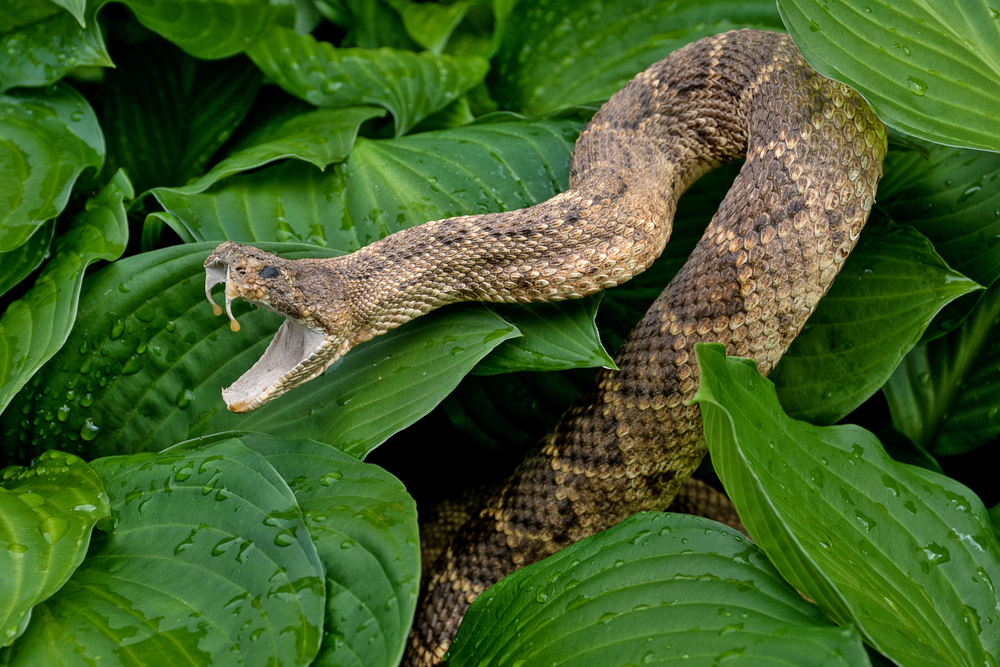
5 Signs of snakes in your backyard
1. Shed snake skins
This is one of the clearest proofs that a snake was living his best life in your garden. Snakes shed their skin as they grow, leaving behind scaly remnants of their past selves. So, if you find a long and paper snake skin in your backyard, near your brushes, there’s a high chance a snake is nearby.
The interesting part about snakes is that they don’t shed randomly, they always look for and choose hidden and sheltered areas where they can feel safe. Snakes consider shedding a very vulnerable process, so they try to protect themselves at all costs. So, you got it! If you find snake skins in your backyard, the snake is most likely living with you. The snake is not just passing through; it considers your place a safe territory.
But did you know that the texture and the pattern of the skin can also tell a lot? There are multiple types of skins, some are smooth with faint stripes, others with diamond-shaped markings. No matter what type of skin you find, it means that you might be in danger, and it’s time to be on alert!
2. Unusual sounds
If you start hearing sounds that don’t match the usual, such as rustling, scratching, or sliding noises, they can be really strong indicators that something is moving in your yard. Snakes are not silent creatures. I know we all tend to associate them with wildlife, but their movement can create subtle sounds that are easy to overlook.
Remember that one of the most clear indicators that there is a snake in your backyard is the sound of slithering or even rustling through leaves. As you already know, when snakes are moving across the ground, their bodies cause a lot of noise. Most of the time, these sounds are soft but can become noticeable. You may hear a shuffling sound or even more like a swishing sound as they move through dried plants.
But some snake species may make a very district noise that can easily be recognized. For example, rattlesnakes are some of the easiest to identify. The rattle is produced by the snake’s tail, which vibrates rapidly. Did you know that the snake produces this sound to warm intruders of its presence?
In case you hear the rattle sound, try to stay calm and move cautiously. It means that the snake is ready to defend itself, so you better watch your next moves.
However, not all snakes are as loud as rattlesnakes. There are a lot of species that stay silent. They explore shelter and often search for a safe place to rest. So, make sure to keep an ear on the strange sounds because they can be one of the first signs of a snake’s presence.
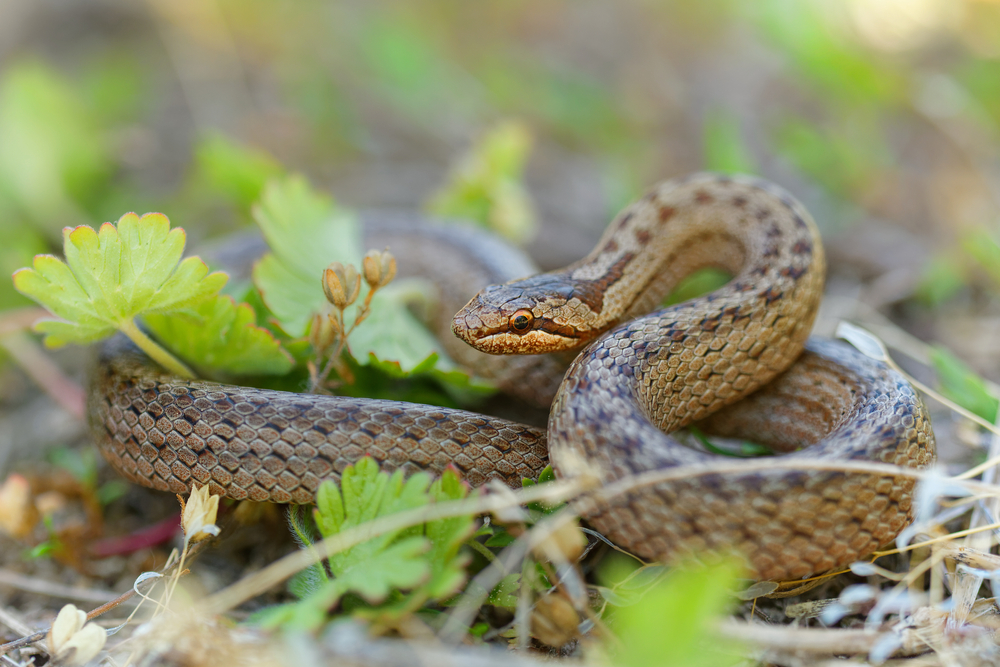
3. Unusual sightings
Sometimes, without even realizing it, you can catch a glimpse of a snake that is trying to hide. This kind of sighting can be scary, but it forces you to take action.
Snakes always try to avoid human interaction and are very secretive. So, if you are meeting with a snake in your backyard, it might be a sign that the creature feels at home. Sounds funny? Well, it isn’t.
Snakes are most active during the night, making sightings during daylight hours relatively rare. And that’s not all! You also need to know that all these types of signs are more noticeable in the warmer months because that is the time when snakes are actively hunting for food.
Even though a sighting during the day could indicate that your backyard is appealing to them, don’t panic! You need to pay more attention to your surroundings and try to understand clearly which species you are dealing with.
After you understand exactly who your enemies are, you’ll need to start considering ways to reduce your backyard’s appeal to these reptiles.
4. Nesting sites
Snakes are experts when it comes to finding shelter in your backyard. Most mammals build nests or burrows, but snakes look for hidden spots where they can cool off and rest. It’s interesting how these spots seem inconspicuous to the untrained eye, but they are key to a snake’s survival.
Snakes often nest in areas with tall grass, piles, or fallen leaves, where they can remain hidden from view.
If you have dealt with rodents before and your yard has rodent tunnels or rabbit holes, they could provide great hiding places for snakes. These areas are attractive to snakes because they represent concealed spaces that can help them stay away from the sun while also serving as a convenient entry point into your backyard.
Remember that snakes will always nest in areas with easy access to water. They love to live near water sources because they provide a steady supply of prey and offer a cool retreat during warmer months.
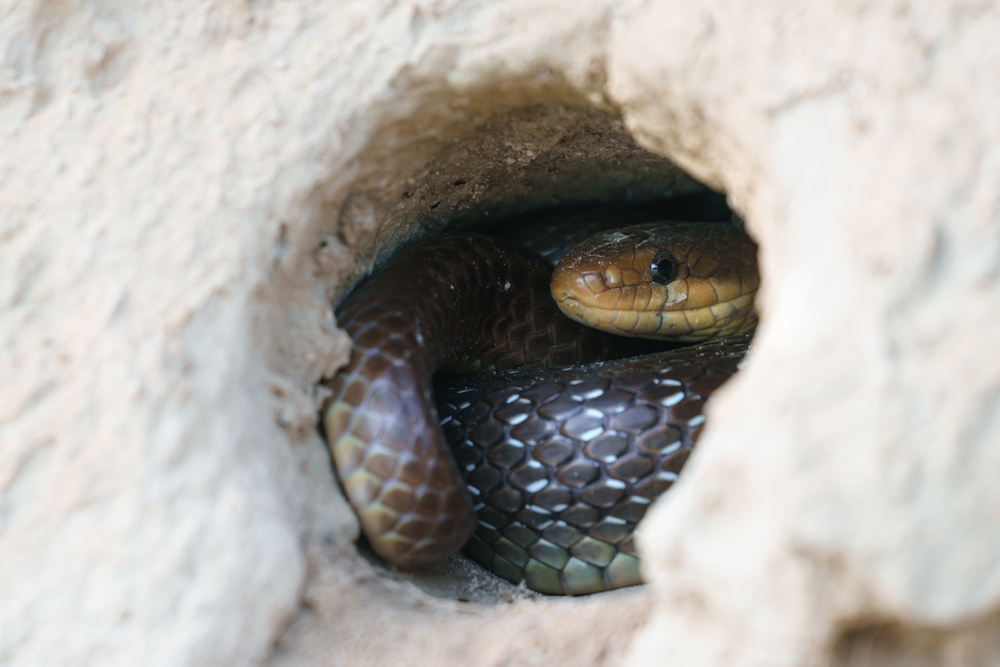
5. Presence of prey
Snakes are incredibly motivated by the search for food, and their primary sources consist of small birds, insects, and even amphibians. So, it’s normal for the snakes to search for food in your backyard, especially if there are limitless resources.
One of a snake’s favorite dishes is represented by rodents. Mice, rats, and squirrels are frequently found in backyards. So, they turn into ideal prey for the hungry snakes.
What can you do? Well, the most important thing is to control the population of potential prey species in your yard and transform it into a less attractive space for the snakes. You can start by reducing the food sources. So, it’s essential to keep your backyard as clean and free of debris as possible.
It’s a helpful solution for not only the snakes but also all the other little creatures that can pose a problem for your household.
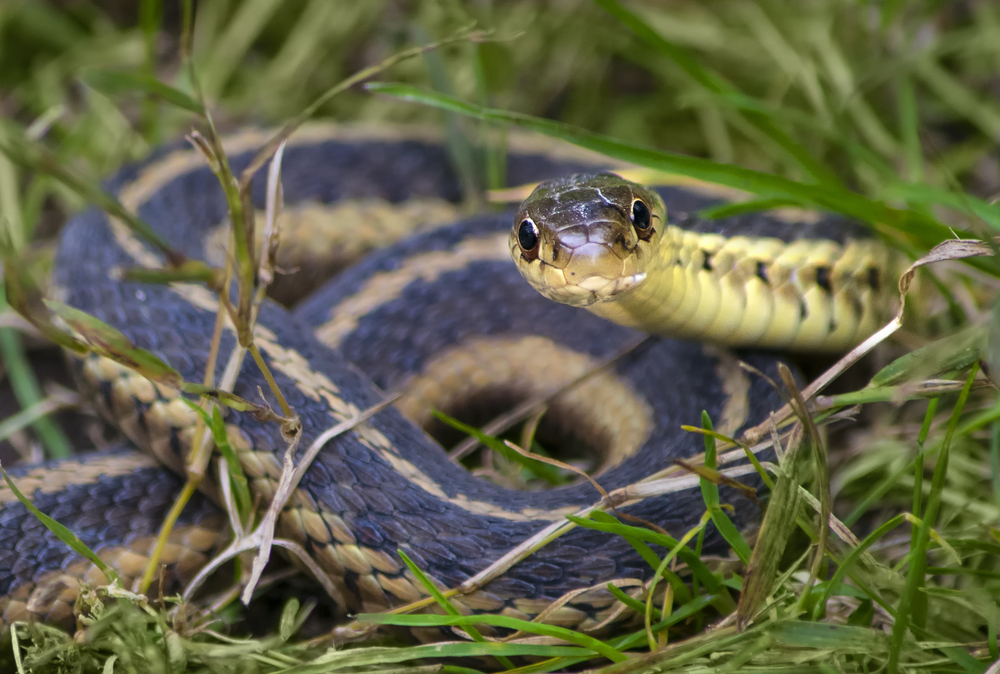
Dangerous snakes that could be hiding in your garden
1. Eastern Diamondback Rattlesnake
This is one of the scariest snakes in North America and the largest venomous snake on the continent. Usually, it can be found in the southeastern United States because it prefers sandy areas. However, it’s not unusual for them to sometimes find their peace in your backyard. I know it sounds terrifying, but we’ll soon get to the tips and tricks on how you can get rid of these creatures and keep them away from your house.
Did you know that the Eastern Diamondback Rattlesnake can grow up to 8 feet long? It can be easily recognized because of its diamond-shaped patterns. So, in case you are dealing with this species, you’ll immediately understand the danger.
They are capable of destroying tissue and causing severe pain that often leads to fatal consequences. It’s very aggressive and if you spot it in your garden, you should be extremely careful and watch for your next move.
2. Copperhead
This is one of the most common venomous snakes in North America. It is often found in backyards, especially those with multiple grassy areas.
What makes it unique? Well, it’s a master of intimidation because he is known for raising his body high before striking. The problem with it is his venom, which is a deadly mix of hemotoxins that break down blood and tissue.
Oh, and here is a sign that will make you rapidly understand if you are dealing with a Copperhead: it has tan patterns that make it nearly invisible on fallen leaves and dirt paths. You might not even know you are near one until it’s too late. It’s a pretty efficient sign, especially if you consider the other species.
Even though copperhead bites are not fatal, their bites can be very painful and cause a lot of health problems. Worst of all? Most bites in the United States happen because people step on them without realizing they’re there.
3. Cottonmouth
If you’ve seen a thick, dark snake with a big mouth and a white interior, you’ve most likely met a cottonmouth snake. Despite its nickname, this species doesn’t always live in the water. So, if you have a pool or a pond in your backyard, it can represent the perfect cooling place for the scary snake.
Unlike some other snakes, its bites can lead to serious infections and swelling. However, this one may stand its ground rather than flee.
4. Coral Snake
If you live in the southern U.S., particularly in states like Florida, Texas, or Arizona, you might encounter a coral snake in your garden. These snakes are tiny and very brightly colored. However, you should be extremely careful because even though they look like they would never hurt you, they are incredibly dangerous.
You can identify a coral snake by its striking pattern of red, yellow, and black bands. They prefer moist and wooded environments and often enter into yards with dense vegetation to mulch.
Coral snakes produce an interesting type of venom, which can cause respiratory failure. So, if you spot any of these in your garden, please be extremely cautious.
5. Timber Rattlesnake
This is a large and venomous viper found in the Eastern United States. You can easily identify it by its robust body, which can reach lengths of up to 60 inches. Even though their colors may vary, they typically have a pattern of dark crossbands on a lighter background, which can range from yellow to gray or brown.
Timber rattlesnake loves rats and mice, so it might be one of the reasons why they can be attracted by backyards. They are known to have a very important role in controlling rodent populations.
6. Mojave Rattlesnake
It’s a medium-sized snake, usually measuring between 24 to 48 inches in length. The snake is characterized by its green coloration, with diamond-shaped markings along its back. Its tail has distinct b;acl and white bands and a triangular head. It can be very scary and can be found in states such as Nevada, California, and New Mexico.
The Mojave rattlesnakes are usually active during the night and in the summer months, especially when the temperatures are cooler. During the day they hide under rocks, in burrows, or in vegetation to avoid the heat.
7. Praire Rattlesnake
This species is found in the central and western United States, as well as parts of Canada and Mexico. It usually measures around 40 inches in length. It has a unique pattern of dark brown and lighter-colored scales in between. The tail has a rattle, and the snake uses it as a warning signal.
The problem with these snakes is that they are highly adaptable and can find comfort in a variety of places. During the cooler months they prefer to be active during the day, while in the hot summer months, they become nocturnal and never leave their hiding spots when the temperatures are high.
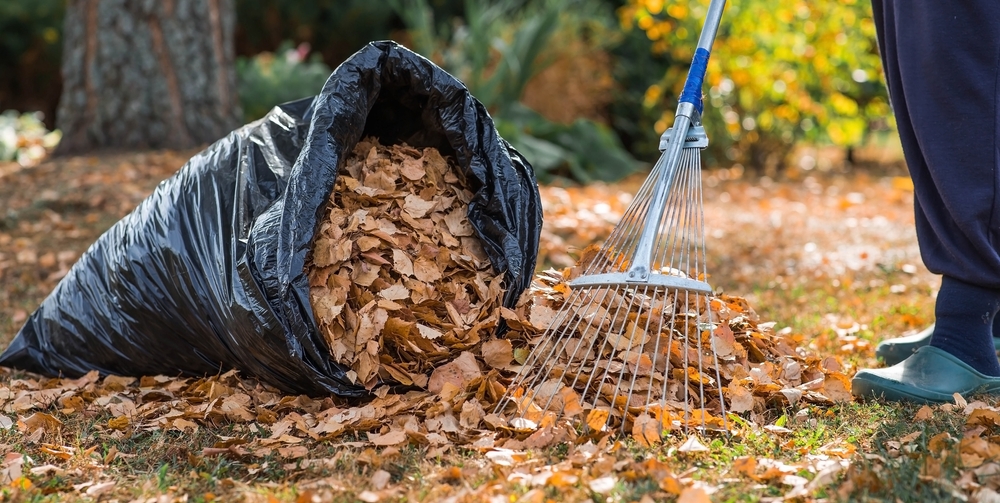
How to get rid of snakes
1. Keep your yard clean
Snakes are extremely attracted to areas with food. If you keep your backyard tidy, you will transform it into a less inviting space for snakes. You should regularly remove piles leaves, and debris, keep the shrubs and bushes well-trimmed, and make sure to regularly mow the lawn.
2. Remove food sources
As long as your yard is home to rodents and insects, it becomes almost impossible to get rid of snakes. The best would be to use pest control methods to reduce the presence of rodents. This is a key step in transforming your space. You can also secure your trash cans and compost bins and even consider using natural repellents to keep things under control.
4. Seal entry points
As you already know, snakes can find available gaps or cracks and easily arrive in your backyard and sometimes even your house. Make sure to frequently check around your property for openings in foundations, under doors, and around windows. You must seal immediately any holes or gaps you identify.
5. Use snake repellents
There are a lot of repellents available, and they typically contain natural ingredients like cinnamon, sulfur, or essential oils that snakes dislike. However, even though repellents can help, they don’t represent a long-term solution. It’s significantly more effective to remove the food sources and keep your backyard tidy.
6. Create a barrier
I know it might sound funny, but you can also create a barrier around your yard because this way, you will be able to build a physical barrier that will be hard to pass. You can install a snake-proof fence around the perimeter of your property. The fence should be around a foot into the ground and extend several feet above the ground to ensure snakes can’t climb over it.
Before leaving, make sure to check out our website. On Pet Compilation, you can find a lot of pet-related content. By far, some of the most loved articles are those about dogs. So, here’s our recommendation for you: 6 Ways to Prevent Motion Sickness in Dogs During Travel












